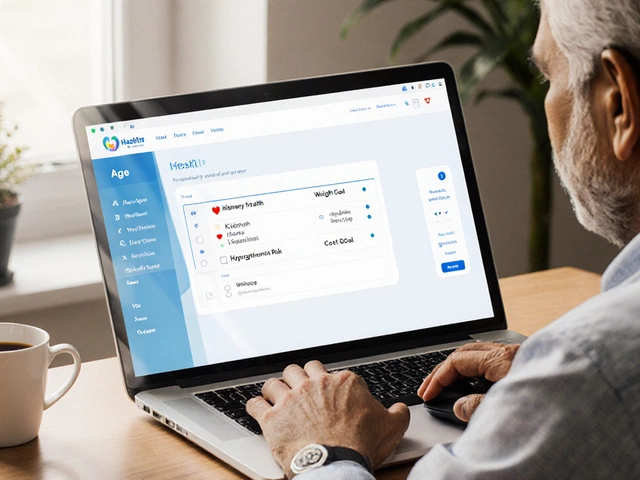You never realize how complicated fertility treatments are until you start thinking about the numbers. When people say, “IVF is expensive,” they’re not kidding. But what does that actually mean? Are we talking about a few thousand dollars, or does it run a lot higher?
If you’re ready to look past the vague guesses and get straight answers on IVF cost, you’re in the right spot. People get quoted $5,000, $12,000, sometimes even more for just one cycle—without including medication, tests, or extra procedures. And if you need more than one round, those numbers climb fast.
It’s not just about one bill either. Each clinic, city, and even state has its own price tags. Some clinics bundle fees, while others tack on extras for everything from lab work to freezing embryos. If you want to build a realistic budget, you need to know all these details up front.
- How Much Does IVF Actually Cost?
- Why Does IVF Price Vary So Much?
- Hidden and Extra Costs to Watch For
- Smart Ways to Save on IVF
- Real Stories: What People Really Pay
How Much Does IVF Actually Cost?
Here’s the straight answer about IVF cost: it usually lands somewhere between $12,000 and $15,000 for one fresh cycle in the US, but that’s just the start. Most people are surprised when they hear that number doesn’t include necessary meds, lab tests, or things like egg freezing or genetic testing. With those extras, a single attempt at IVF treatment can easily balloon to $20,000 or even more.
The American Society for Reproductive Medicine (ASRM) gives an average ballpark figure:
“A typical IVF cycle in the U.S. averages $12,400, before medication and potential add-ons.” — ASRM, 2024
Let’s break down the main pieces:
- Base procedure fee (egg retrieval, lab work, embryo transfer): $10,000–$15,000
- Medications (fertility injections): $3,000–$7,000 per cycle
- Genetic testing (sometimes optional): $2,000–$6,000
- Embryo freezing/storage: $500–$1,200 upfront, plus yearly storage fees
Check out this simple breakdown to see how things stack up at a glance:
| IVF Service | Typical Cost Range |
|---|---|
| Initial consult & tests | $300 – $1,000 |
| IVF procedure (base) | $10,000 – $15,000 |
| Medications | $3,000 – $7,000 |
| Egg/embryo freezing | $500 – $1,200 |
| Yearly storage | $350 – $1,000 |
| Genetic testing (PGT-A/PGT-M) | $2,000 – $6,000 |
Something a lot of people miss: insurance usually doesn’t cover in vitro fertilization price, unless you live in one of the 19 states with some sort of fertility mandate (and coverage there has plenty of asterisks).
One other thing to keep in mind—most couples don’t get pregnant on the first round. It often takes two or more cycles, which means costs multiply. If you want a hard number for your situation, always ask the clinic for a detailed quote. Get it in writing. That’s how you avoid nasty surprises.
Why Does IVF Price Vary So Much?
There’s no one-size-fits-all answer when it comes to the cost of IVF treatment. Prices can swing by several thousand dollars even within the same city. Ever wondered why?
First off, every clinic makes its own price list. One clinic might quote you $7,500 for a cycle, while another half a mile away asks for $15,000. That even happens in the same metro area. What’s included in those fees is all over the place—some clinics add essentials like ultrasound and bloodwork into the base price, while others charge for every single item separately.
Location plays a huge part too. Clinics in big cities like New York or San Francisco almost always cost more, sometimes double what you’d pay in smaller towns. High rent, expensive staff, and pricey lab equipment drive up those numbers quick.
The type of procedure you need is another big deal. If you need to use donor eggs or sperm, add another $5,000 to $15,000 easy. If you’re going for advanced genetic testing (called PGT), that could tack on $3,000 to $7,000 more. Each little step—from egg retrieval to embryo freezing—is its own charge.
Here’s a quick look at some common extra charges you might run into:
- Medication: $2,000 - $6,000 per cycle
- Storing frozen embryos: $500+ per year
- Anesthesia during egg retrieval: $500 - $1,000
- Endometrial scratch or other extra procedures: $200 - $1,000
Even insurance changes things up. Some states require coverage for in vitro fertilization, others don’t. That means two patients might pay wildly different amounts for the exact same procedure, just based on ZIP code and coverage.
To sum it up, Dr. Ethan Lyn, fertility specialist at NYU Langone, puts it simply:
"IVF cost comes down to customized care. Every patient and every clinic is different, and so is the price tag. The only way to know your true cost is to ask for a full breakdown—don’t just rely on those shiny package deals."
Don’t be shy about asking for itemized prices or even negotiating bundled packages. The more you understand about the real cost drivers, the easier it is to cut surprises out of your IVF cost plan.

Hidden and Extra Costs to Watch For
When it comes to the actual bill, the advertised price for IVF cost is usually just the starting point. If you’re not prepared for all the add-ons, you’re in for a shock. Here’s where the tricky stuff pops up and what to watch for before signing anything.
- Medications: Fertility drugs are a huge chunk, often $2,000 to $7,000 per cycle on top of the base fee. Not every clinic includes them in their price.
- Pre-IVF screening: Bloodwork, ultrasounds, and infectious disease screening? These tests pile up fast—sometimes another $500 to $3,000.
- ICSI and Assisted Hatching: If you need help with sperm injection (ICSI) or embryo hatching, expect an added $1,000–$3,000 per cycle.
- Embryo or Egg Freezing: Saving embryos or eggs for later isn’t part of a standard package. Freezing can run $500–$1,500, and long-term storage fees rack up annually (usually $500–$1,000 per year).
- Genetic Testing (PGT-A/PGD): This detailed embryo screening can cost anywhere from $3,000–$6,000 per cycle, sometimes more if you test extra embryos.
- Donor Sperm or Eggs: If you’re using a donor, plan for another $500–$10,000 or even higher depending on the source and quality.
And don’t forget travel and time-off work if your clinic is far away—those costs add up, especially if you need multiple visits. Some folks also end up paying more for extra cycles, since the average couple needs 2–3 tries before success becomes likely.
| Extra IVF Cost | Typical Price Range (USD) |
|---|---|
| Medications | $2,000–$7,000 |
| Pre-IVF Testing | $500–$3,000 |
| ICSI/Assisted Hatching | $1,000–$3,000 |
| Embryo/Egg Freezing | $500–$1,500 (plus storage) |
| Genetic Testing (PGT-A/PGD) | $3,000–$6,000 |
| Donor Eggs/Sperm | $500–$10,000+ |
Best tip? Get the clinic to give you a written list of potential charges. Ask for every little thing spelled out. The more you know up front, the less likely you’ll be blindsided down the road.
Smart Ways to Save on IVF
Saving money on IVF cost takes some hustle, but real savings are possible if you know where to look and what to ask. Not every tip works for everyone, but these options can put you in a better spot financially without cutting corners that risk your results.
- Shop around. Prices for IVF treatment and meds swing a lot from one clinic or pharmacy to the next. Ask for full cost breakdowns and compare not just the sticker price, but also included services. Sometimes a clinic with a higher upfront fee actually covers more, saving you from surprise bills later.
- Check your insurance coverage. Some states require insurers to pay for all or part of fertility treatments like IVF. Even if your plan doesn’t cover the whole process, it might pay for some meds, bloodwork, or ultrasounds. Call your insurance, ask what’s in, and get everything in writing.
- Look for pharmacy discounts and patient programs. Major drug makers and specialty pharmacies sometimes offer coupon savings or assistance programs. Ask your doctor if you’re eligible—saving a few hundred or even a thousand dollars on medicines is common.
- Multi-cycle and refund packages. Clinics often sell packages that include two or more IVF cycles, sometimes with a partial refund if you don’t bring home a baby. This can buffer you against needing extra cycles, which is pretty common.
- Go abroad. Some couples save by getting in vitro fertilization in other countries where clinics are certified and much less expensive. Popular spots like Spain, Greece, and the Czech Republic have reputable clinics and transparent price lists, but always check credentials and legal issues first.
Here’s a quick look at cost differences by location for a single IVF cycle, meds not included:
| Location | Average Cost (USD) |
|---|---|
| USA (Major cities) | $12,000–$15,000 |
| Spain | $5,000–$7,000 |
| Czech Republic | $3,500–$5,000 |
If you decide to shop globally, factor in travel and lodging. But for plenty of people, even with the extra costs, the savings win out.
Whatever you try, always look out for quality—cutting costs is great, but not if it messes with your results or safety. Don’t be shy about negotiating, asking for a payment plan, or researching grants and nonprofit programs. Every little bit adds up. Getting clear answers up front helps you own the process and manage the financial side of your IVF treatment a whole lot better.

Real Stories: What People Really Pay
If you ask ten couples what their IVF cost was, you’ll probably get ten different answers. It all comes down to where you go, what treatments you need, and whether insurance chips in. It helps to see real numbers from real people—so let’s dig into a few examples and see the true picture behind those big bills.
Take Amy and Raj from Texas—they paid close to $15,000 for their first IVF treatment round, including meds. Their insurance didn’t cover much except some basic blood work. When their first cycle didn’t work, they spent another $10,000 on a second try, with additional costs for embryo freezing and storage. Grand total for their two cycles? About $27,000, not counting time off work and travel.
Then there’s Mark and Priya in New Jersey. Their clinic offered something called “shared-risk,” which let them pay one lump sum (nearly $25,000) for up to three attempts. It helped take the stress off wondering if they could afford another round if the first didn’t work out. They ended up needing two cycles in total—and while they still spent a lot, the predictability felt worth it.
Some folks find ways to lower costs. Emma, a single mom in California, got financial help from a fertility grant and used generic meds—cutting her total to just under $8,000 for a single cycle. She also shopped around: clinics in San Francisco quoted her up to $20,000 a cycle, but she found a reputable center a few hours away that charged half as much. Her advice: don’t be shy about asking for itemized quotes or inquiring about discounts.
| Location | Cycles | Total Cost | Insurance help? |
|---|---|---|---|
| Texas | 2 | $27,000 | Minimal |
| New Jersey | 2 of 3 covered | $25,000 | Shared-risk plan |
| California | 1 | $8,000 | Grant + self-pay |
The big takeaway? You need more than a ballpark figure. Ask clinics for details, not just their “base” in vitro fertilization price. Review states’ required coverage if you have insurance—they vary a lot from state to state. And always plan for those surprise extras: freezing, storage, medications, or genetic screening can easily add thousands.
Bottom line: finding out what people really pay makes you less likely to get blind-sided. Take advantage of online support groups—people there often share their itemized bills and tips for saving money. The more real numbers you get, the more in control you’ll feel of your own IVF cost story.






